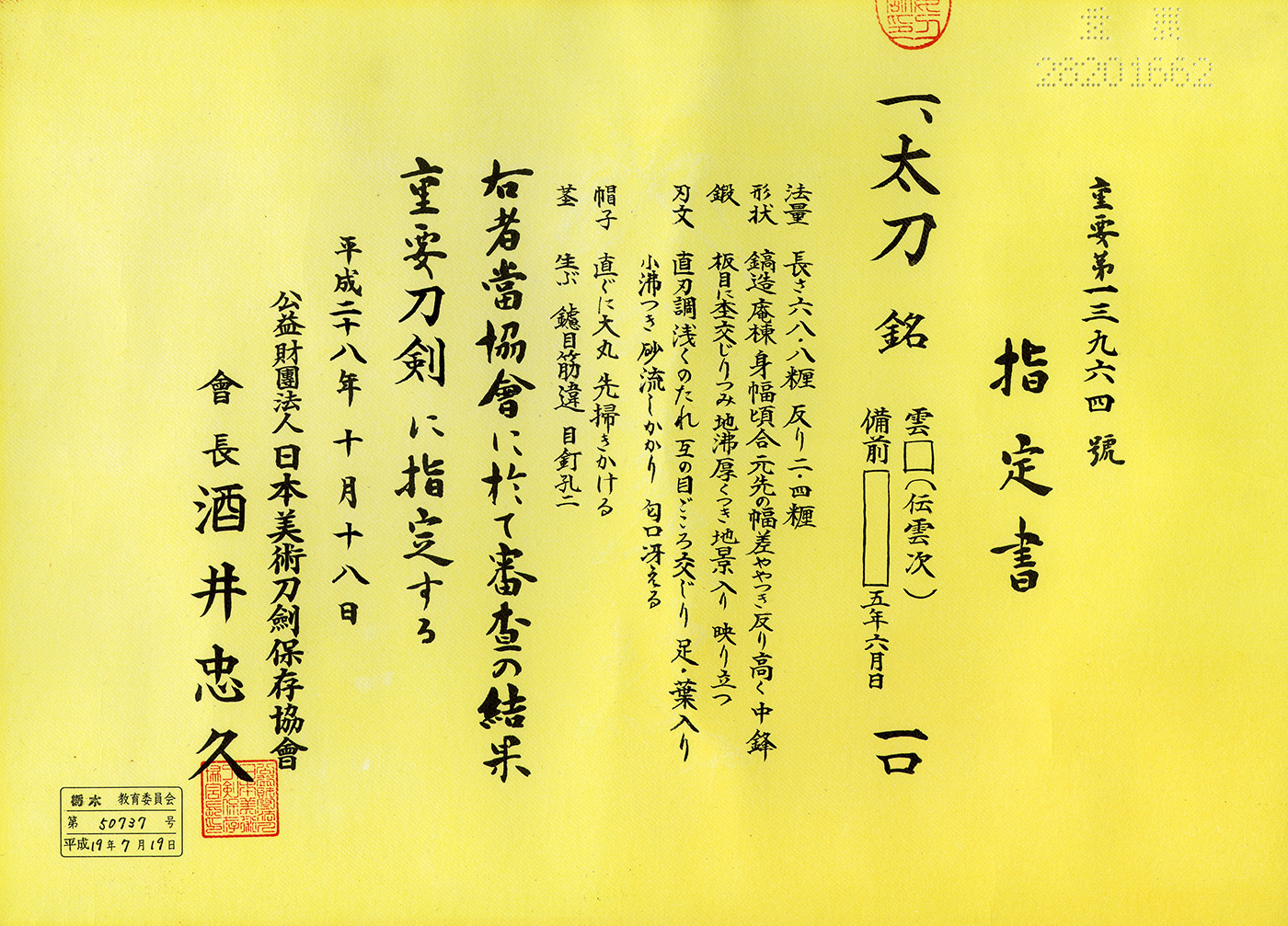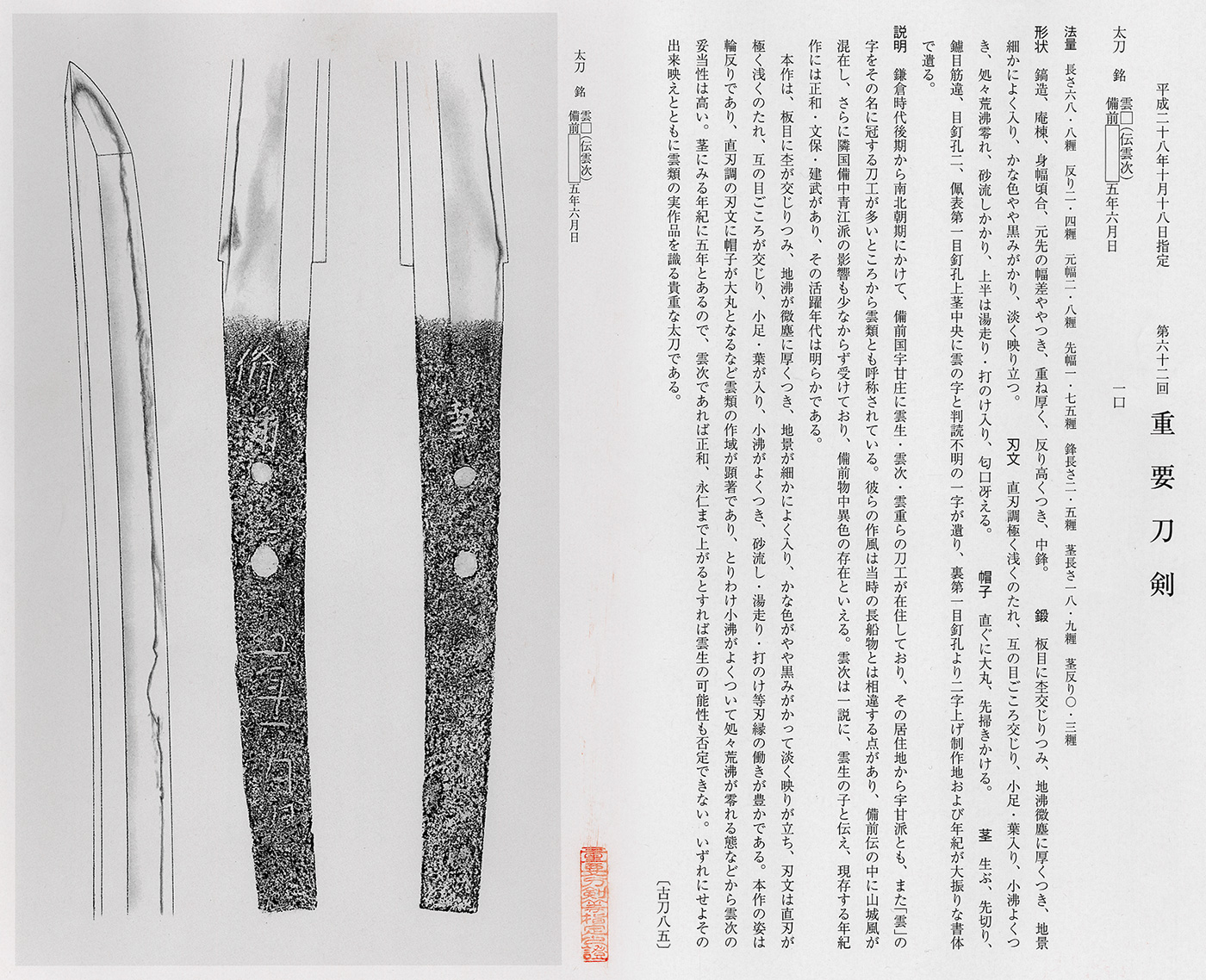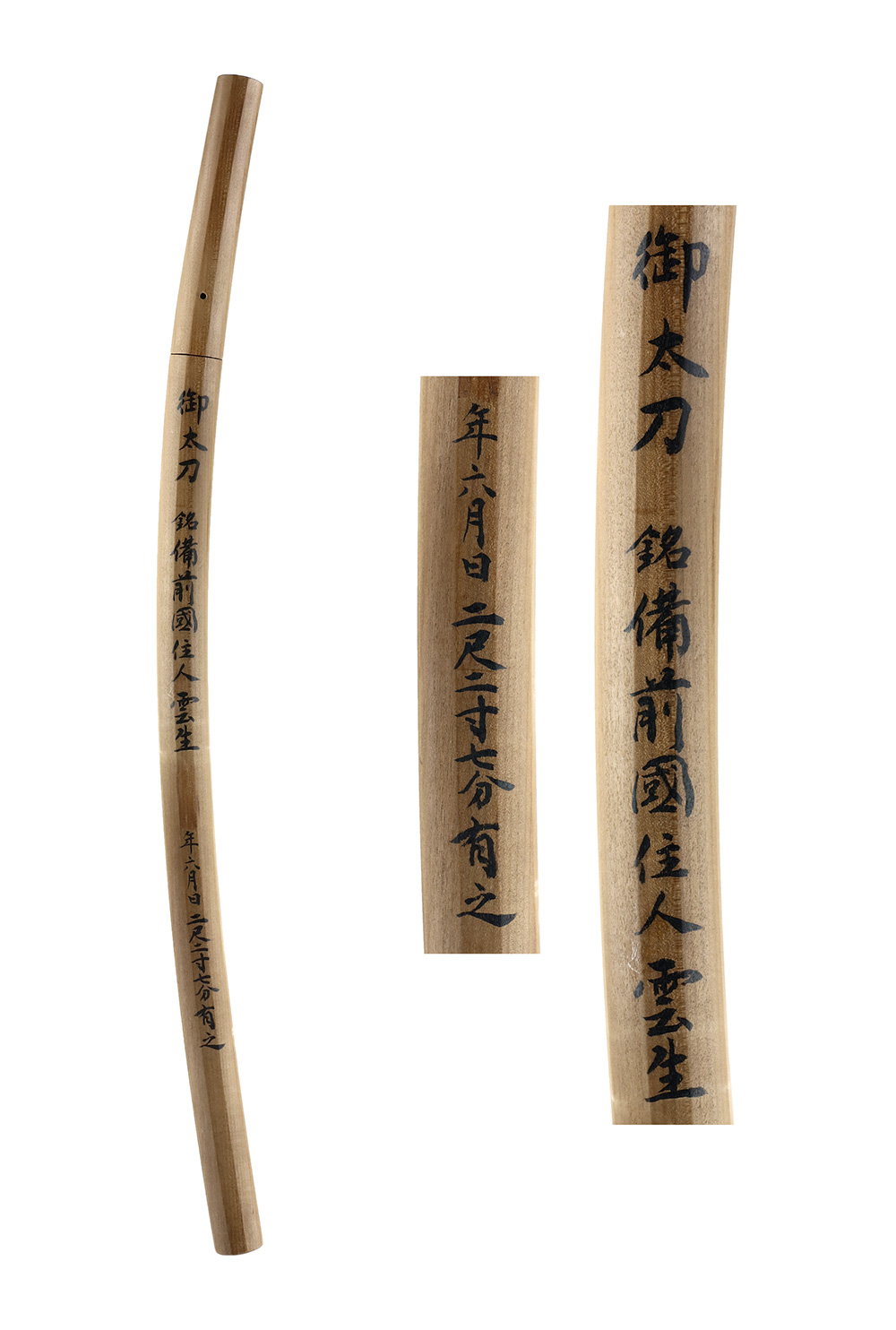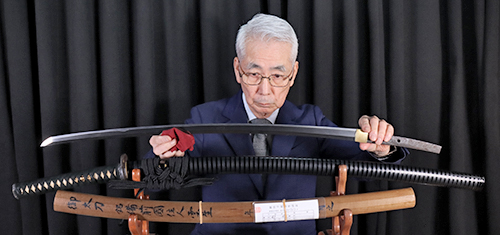Ordering number:AS24644
Katana: Shirasaya with Koshirae (62nd NBTHK Juyo Token)
Signature: Un (unclear) Den-Unji
Bizen ?5 Nen 6 Gatsu Hi
雲(以下不明)
備前▫︎五年六月日
Koto: Jyo Saku
We divide 4 sections for each sword as Saijyo Saku, Jyojyo Saku, Jyo Saku and Regular Saku.
This work is ranked as Saijyo Saku among the attributed works of Unji.
Habaki: Single-layered habaki with gold foil
Blade Length: 68.8 cm (27.09 in)
Curvature: 2.4 cm (0.94 in)
Mekugi Hole: 2
Width at Base (Motohaba): 2.74 cm (1.08 in)
Width at Tip (Sakihaba): 1.09 cm (0.43 in)
Thickness of rim (Kasane): 0.73 cm (0.29 in)
Sword Weight: 635 g
Era: Late Kamakura period
Shape: A deeply curved form characteristic of the early period, with an extended kissaki. The shinogiji shows mainly a mixture of ko-itame and mokume hada.
Jigane: Well-forged itame-hada of excellent quality, resembling the Aoe school’s jigane.
Hamon: Nioi-deki, suguha with a double line, featuring ko-ashi activity. The boshi is rounded with a sweeping turn-back (hakikake).
Features: The omote bears the inscription “Bizen ▫︎ Gonen Rokugatsu Hi,” while the ura shows the character “Un.”
This is a nearly ubu nakago (unaltered tang) work from the Kamakura period, and the inscription of a specific year and month is extremely rare.
Aoi Art’s Comment: From the late Kamakura period, the Un lineage—such as Unshō, Unji, and Unshige—was active in Ukai, Bizen Province, and is often referred to as the Ukai school or the Un group.
Their style differs from that of the Osafune school, with characteristics of both the Yamashiro tradition and neighboring Bitchū’s Aoe school.
Unji, possibly the son of Unshō, has extant works dated to Shōwa, Bunpō, and Kenmu eras.
His works are marked by finely detailed jikei in the jigane, with a faint utsuri and slightly dark steel tone. The hamon is typically suguha, slightly undulating (notare), sometimes with a touch of gunome, and features ko-ashi, ha, and sunagashi.
This blade shows a wa-sori (circular curvature), suguha style hamon, and a rounded boshi.
Its characteristics strongly reflect those of the Un group, and it is highly likely to be the work of Unji.
The inscription with the year “?5” suggests a possible date in the Shōwa or Einin eras, supporting the attribution to Unji.
This piece is a valuable example of a true work from the Un group, with exceptional craftsmanship.
Koshirae:
Saya (Scabbard): Black lacquer stone-textured saya
Tsuba: Round iron tsuba with chrysanthemum petals in high relief and partial gold iroe decoration
Signature: Kōfu-jū Mitsuyoshi
Fuchikashira: Shakudō nanako-ji with chrysanthemum flower engraving
Menuki: High-relief carving of chrysanthemum. Possibly solid gold chrysanthemums.
62nd NBTHK Juyo Token
AoiArt estimation paper
Whole Oshigata
Auction Starting Price:5,950,000JPY
Place Bid
Related Items:
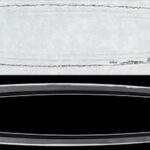 Tachi : Ichi(judged as Yoshioka Ichimonji)(NBTHK the 41st Juyo Token)
Tachi : Ichi(judged as Yoshioka Ichimonji)(NBTHK the 41st Juyo Token)
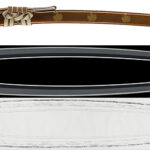 Katana: Nobutsugu(Aoe)(65th NBTHK Juyo Token)
Katana: Nobutsugu(Aoe)(65th NBTHK Juyo Token)
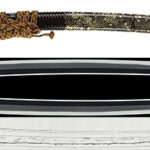 Katana:Mumei (Den Aoe) (NBTHK Tokubetsu Hozon Token)
Katana:Mumei (Den Aoe) (NBTHK Tokubetsu Hozon Token)
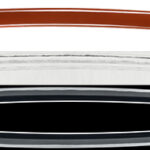 Katana: Mumei(Unsigned)(Aoe school)(54th NBTHK Juyo Token)
Katana: Mumei(Unsigned)(Aoe school)(54th NBTHK Juyo Token)
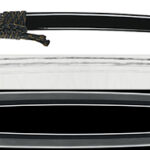 Katana:Mumei (attributed to Den Hosho).(NBTHK Tokubetsu Hozon Token)
Katana:Mumei (attributed to Den Hosho).(NBTHK Tokubetsu Hozon Token)
 Katana:Mumei (Unsigned) [Attributed to Enju] (19th NBTHK Juyo Token)
Katana:Mumei (Unsigned) [Attributed to Enju] (19th NBTHK Juyo Token)




